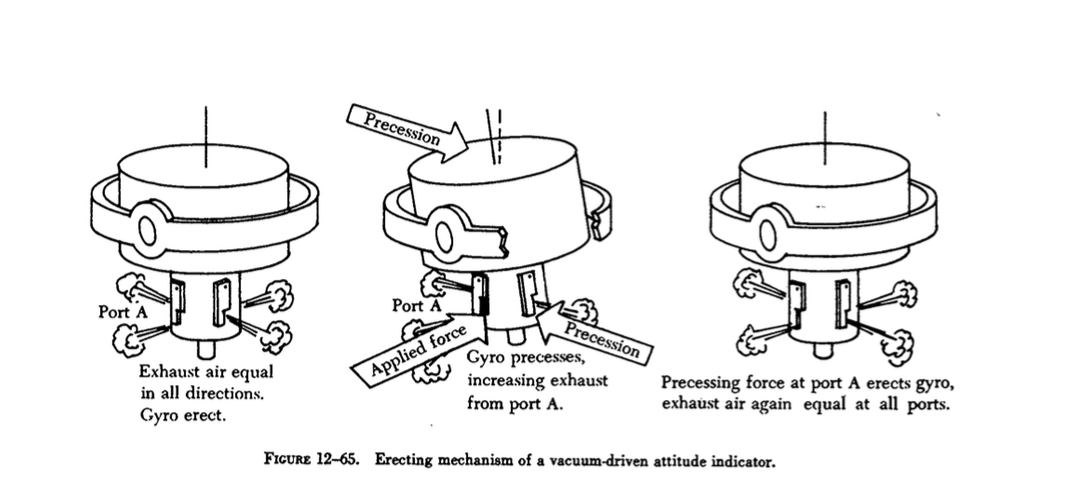A gyroscopic Attitude Indicator will not build up long-term error simply because of its erection mechanism in an extended coordinated turn. However, all gyroscopes will accumulate error over time, which must be corrected in some fashion.
A gyroscopic AI will display a turning error of 3-5 degreesturning error of 3-5 degrees in a 180 degree turn. However, this precession is reversed in the second 180 degrees of a turn, so after 360 degrees, the precession is eliminated and the AI is correct again.
To explain why this is, first consider the design of the attitude indicator: the pendulous vanes exert an erecting force when the gyro is not vertical with respect to downward acceleration. 
This causes the gyro to erect itself over time, and would in fact do so incorrectly if the aircraft were kept on a constant heading (if, for example, flown uncoordinated on a constant heading.)
However, in a coordinated turn, the case of the AI (including the pendulous vanes) rotates around the gyro. For the first half of the turn, the gyro is erecting in a particular direction. However, as the pendulous vanes move more than 180 degrees around the gyro, they add error opposite the original direction - removing the original error.

Note that while this fixes turning error in the long term, other sources of error are still in place. Precession caused by the fact that the gyroscope gimbals are not perfectly friction-free, which will vary in each individual instrument, will still happen - and the erection system will be unable to correct for it, as it's too busy causing and removing its own error.
A ring-laser gyro would be subject to the same problems, because it must still have a correction process of some sort. All gyroscopes, even perfect ones, are subject to apparent precession:
A freely spinning gyro tends to maintain its axis in a constant direction in space, a property known as rigidity in space or gyroscopic inertia. Thus, if the spin axis of a gyro were pointed toward a star, it would keep pointing at the star. Actually, the gyro does not move, but the earth moving beneath it gives it an apparent motion. This apparent motion is called apparent precession. The magnitude of apparent precession is dependent upon latitude. The horizontal component, drift, is equal to 15° per hour times the sine of the latitude, and the vertical component, topple, is equal to 15° per hour times the cosine of the latitude.
(FAA Flight Navigator Handbook, p. 3-7)
Any gyro, whether a ring-laser, MEMS, or gyroscopic, in a coordinated turn, will exhibit apparent precession and will have to be corrected over time if their only source of correction is acceleration.
